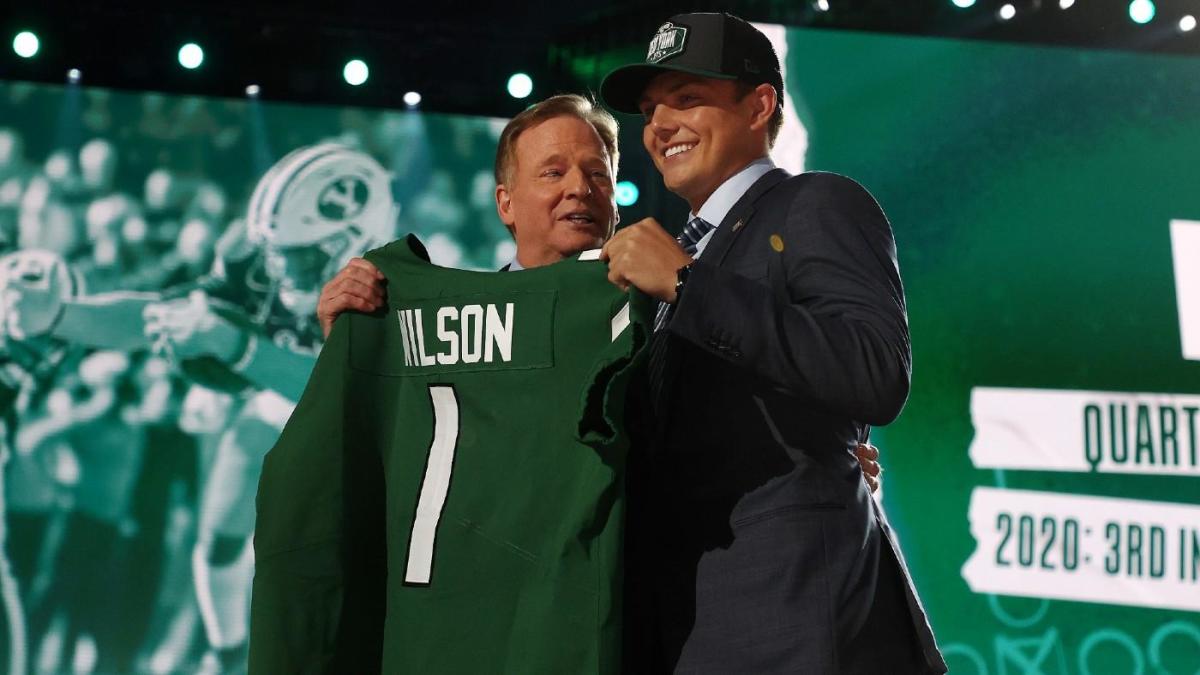Products You May Like

The 2020 New York Jets were bad enough that they landed the second overall pick in the 2021 NFL Draft. Thanks to a few trades, the Jets also had a handful of extra picks on their hands — including an additional first-round selection courtesy of the Seattle Seahawks, from the Jamal Adams deal.
That means the Jets entered the draft with among the most draft capital in the league. They put it to good use, making nine selections in all. As part of our ongoing series here at CBSSports.com, in the space below, we are going to discuss one thing the Jets didn’t do in the 2021 NFL Draft, and also break down one thing they definitely got right.
Pass defense still lacking
The first step the Jets took toward fixing their defense was hiring former San Francisco 49ers defensive coordinator Robert Saleh as their new head coach. Saleh coached up one of the best defenses in the league over the last few seasons, and is widely regarded as a bright defensive mind.
The next step the Jets took was signing former Bengals edge rusher Carl Lawson. One of the top free agents on the market, Lawson will be 26 years old next season and is coming off a season in which he recorded 32 quarterback hits — his third season (out of four) with 20 hits or more.
Lawson needs more help up front, though, and the Jets didn’t use any of their nine selections on a pass rusher. Counting on the likes of Jabari Zuniga and Vinny Curry as your complementary rushmen isn’t the soundest strategy. Quinnen Williams is excellent on the interior and the Jets took a flier on Sheldon Rankins, but Rankins is three years removed from his peak and has had issues staying healthy.
New York’s cornerback situation is also precarious at best. The Jets came into the draft with one of the league’s worst cornerback units, and while Joe Douglas and company ended up selecting five defensive backs in this draft, they were all Day 3 picks who can’t necessarily be counted on to fill rotational roles, let alone as starters in Year 1. The Jets simply had other priorities in mind here, which brings us to what they did well…
Infrastructure week(end)
In our series detailing the perfect draft plan for each of the league’s 32 teams, we wrote the following about the Jets:
While some of the blame for the failure of the Sam Darnold era has to fall on the shoulders of Darnold himself, there is no denying that the Jets as an organization failed to put their former franchise quarterback in position to succeed. In three seasons as a starter, Darnold played behind offensive lines that ranked, on average, 27th in Pro Football Focus’ pass-blocking grades and 26th in Football Outsiders’ Adjusted Sack Rate. Not until last offseason did the Jets truly invest any significant resources in upgrading the line in front of Darnold.
The Jets also failed to give Darnold enough high-quality pass-catchers, and they failed to properly utilize the ones they did have. Robby Anderson had talent, but didn’t get to fully showcase it until he left for Carolina. Chris Herndon has averaged just 3.1 targets per game in his three NFL seasons. Denzel Mims played only 44% of snaps. Breshad Perriman was scarcely targeted down the field. The list goes on.
The new Jets regime can’t repeat those same mistakes. That’s why they need to use at least a few of their nine picks in this draft to continue upgrading the infrastructure around the player they select at No. 2 overall. New York has four more Day 1 and Day 2 picks (No. 23, 34, 66, and 86); and while it’s important that the Jets land a few defenders, they shouldn’t forget that the best path to sustainable success is on the other side of the ball. Doing everything possible to put their quarterback in a good position has to be top of mind.
Well, the Jets appeared to take that to heart, because they moved extremely aggressively to surround Zach Wilson with talent.
They traded up in the first round to nab USC offensive lineman Alijah Vera-Tucker, who figures to slot in next to Mekhi Becton on the left side of the offensive line for years to come. They grabbed Ole Miss wide receiver Elijah Moore at the top of the second round, adding a dynamic slot receiver who can both take the top off the coverage and contribute in the running game on both jet sweeps and when lined up in the backfield. They used their fourth-round pick on North Carolina running back Michael Carter, a terrific fit for offensive coordinator Matt LaFleur’s one-cut, zone running scheme.
Combine that group with free-agent signee Corey Davis, last year’s crop of offensive linemen, and 2020 second-round pick Denzel Mims, and the Jets have built a nice foundation in which to drop their latest quarterback prospect. This time around, there won’t be any questions regarding whether it’s the player or the scheme or the surrounding talent holding them back. They’ll know exactly what they have in Wilson, and they’ll know it pretty early on.
